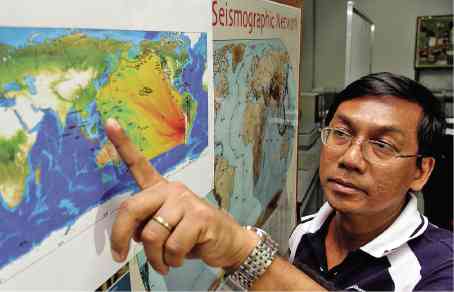The tremor felt in Ormoc City on Monday morning was the “strongest” aftershock so far from last week’s quake, the Philippine Institute of Volcanology and Seismology (Phivolcs) said on Monday.
Many aftershocks are normal to occur, Phivolcs director Renato Solidum said in an interview with DZMM TeleRadyo.
“Ito po ay inaasahan naman natin (We are expecting this),” he said.
READ: Strong aftershock rocks Leyte, Cebu; Intensity VI in Ormoc
A magnitude 5.4 earthquake which rocked Leyte province in the morning was recorded at Intensity VI, causing the people in Ormoc City to panic in fear.
The aftershock occurred only four days after the powerful 6.5-magnitude tremor rattled the same city.
READ: Panic, damage after deadly Leyte earthquake
The Phivolcs chief also reminded the public how to protect themselves during an earthquake.
“Every time na merong malakas na pagyanig, dapat protektahan ang sarili, duck cover, and hold. ‘Pag tapos na ang pagyanig, saka tumakbo (Protect yourself, duck, cover, and hold, every time there are strong quakes. Only run once the shaking is done),” Solidum said.
When asked about connection between the Leyte quakes and “The Big One,” an earthquake with a magnitude of no less than 7.2 that could strike at the West Valley Fault in Metro Manila, Solidum said that they are not related.
“Kung faults sa Metro Manila ang ating pag-uusapan, wala ring koneksyon ang mga faults na kumilos dito sa Leyte. Ang isipin po natin, ang mga fault ay may sariling kilos, sariling paggalaw (If we’re talking about the faults in Metro Manila, they have no connections with those that moved in Leyte. We have to think that fault have their own movements),” he said.
Asked about the intensity of “The Big One,” Solidum said they are expecting Intensity VIII.
“Intensity VIII po ang ating estimate, ‘yong hindi ka na makatayo. Kaya po hindi po ina-advise na tumakbo o maglakad (We are expecting Intensity VIII, when you can no longer stand. That’s why we don’t advise to run or walk),” he said. Rogelio Nato, Jr., INQUIRER.net trainee/JE
